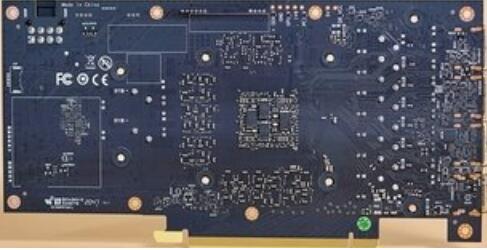In the PCB design method based on signal integrity computer analysis, the most core part is the establishment of the PCB board-level signal integrity model, which is different from the traditional design method.
The correctness of the SI model will determine the correctness of the design, and the buildability of the SI model determines the feasibility of this design method.
4.1. SI model of PCB design
There are many models that can be used for PCB board-level signal integrity analysis in electronic design. Three of the most commonly used are SPICE, IBIS and Verilog-A.
a. SPICE model
SPICE is a powerfu

l general-purpose analog circuit simulator. Now the SPICE model has been widely used in electronic design, and two main versions have been derived: HSPICE and PSPICE. HSPICE is mainly used in integrated circuit design, while PSPICE is mainly used in PCB board and system-level design.
The SPICE model consists of two parts: Model Equations and Model Parameters. Since the model equation is provided, the SPICE model can be closely connected with the algorithm of the simulator, and better analysis efficiency and analysis results can be obtained.
When using the SPICE model to perform SI analysis at the PCB board level, it is necessary for the integrated circuit designer and manufacturer to provide a detailed and accurate description of the SPICE model of the integrated circuit I/O unit sub-circuit and the manufacturing parameters of the semiconductor characteristics. Because these materials usually belong to the intellectual property and confidentiality of designers and manufacturers, only a few semiconductor manufacturers will provide corresponding SPICE models while providing chip products.
The analysis accuracy of the SPICE model mainly depends on the source of the model parameters (that is, the accuracy of the data) and the applicable scope of the model equations. The combination of model equations with various digital simulators may also affect the accuracy of the analysis. In addition, the PCB board-level SPICE model has a large amount of simulation calculation, and the analysis is relatively time-consuming.
b. IBIS model
The IBIS model was originally developed by Intel Corporation specifically for PCB board-level and system-level digital signal integrity analysis. It is now managed by the IBIS Open Forum and has become an official industry standard (EIA/ANSI 656-A).
The IBIS model uses the form of I/V and V/T tables to describe the characteristics of digital integrated circuit I/O units and pins. Since the IBIS model does not need to describe the internal design of the I/O unit and transistor manufacturing parameters, it has been welcomed and supported by semiconductor manufacturers. Now all major digital integrated circuit manufacturers can provide corresponding IBIS models while providing chips.
The analysis accuracy of the IBIS model mainly depends on the number of data points in the I/V and V/T tables and the accuracy of the data. Since the PCB board-level simulation based on the IBIS model uses table lookup calculations, the amount of calculation is small, usually only 1/10 to 1/100 of the corresponding SPICE model.
c. Verilog-AMS model and VHDL-AMS model
Verilog-AMS and VHDL-AMS appeared less than 4 years ago, and they are a new standard. As hardware behavior-level modeling languages, Verilog-AMS and VHDL-AMS are supersets of Verilog and VHDL, respectively, while Verilog-A is a subset of Verilog-AMS.
Different from SPICE and IBIS models, in the AMS language, it is up to users to write equations describing the behavior of components. Similar to the IBIS model, the AMS modeling language is an independent model format that can be used in many different types of simulation tools. AMS equations can also be written at many different levels: transistor level, I/O cell level, I/O cell group, etc.
Because Verilog-AMS and VHDL-AMS are new standards, only a few semiconductor manufacturers can provide AMS models so far, and there are fewer simulators that can support AMS than SPICE and IBIS. However, the feasibility and calculation accuracy of the AMS model in the PCB board-level signal integrity analysis are no inferior to the SPICE and IBIS models.
4.2 Selection of model
Since there is no unified model to complete all PCB board-level signal integrity analysis, in the design of high-speed digital PCB board, it is necessary to mix the above-mentioned models to establish the transmission model of key signals and sensitive signals to the greatest extent.
For discrete passive components, the SPICE model provided by the manufacturer can be sought, or a simplified SPICE model can be directly established and used through experimental measurements.
For key digital integrated circuits, the IBIS model provided by the manufacturer must be sought. At present, most integrated circuit designers and manufacturers can provide the required IBIS model while providing chips through Web sites or other methods.
For non-critical integrated circuits, if the manufacturer's IBIS model is not available, a similar or default IBIS model can also be selected according to the function of the chip pins. Of course, a simplified IBIS model can also be established through experimental measurements.
For the transmission line on the PCB board, the simplified transmission line SPICE model can be used in the signal integrity pre-analysis and space-solving analysis, and the complete transmission line SPICE model needs to be used in the analysis after the wiring according to the actual layout design.